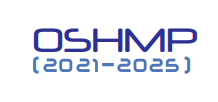Occupational Safety and Health Master Plan 2025 (Malaysia)
Strategy 1 – Empowering OSH in Public Sector
·
Programme 1: Upholding OSH Policies and Laws
·
Programme 2: Empowering NCOSH Functions
·
Programme 3: Government as OSH Catalyst
·
Programme 4: OSH Enforcement Transformation
·
Programme 5: Enhancing OSH Database Management
Strategy 2 – Reinforcing Self-Regulation Practices at Workplace
·
Programme 1: OSH Ownership and Leadership
·
Programme 2: Implementation of Systematic
Self-Regulation
·
Programme 3: Improvement of OSH Best Practices
Through Intervention at
Workplace
·
Programme 4: Workers Self-Regulation Readiness
Strategy 3 – Promoting OSH Education and Research
·
Programme 1: Increasing Awareness, Education,
and Community
Involvement in OSH
·
Programme 2: OSH Competency and Capacity in the
Workplace
·
Programme 3: Enculturing OSH Research and
Development
Strategy 4 – Empowering Occupational Health
·
Programme 1: Providing OSH Competent
Occupational Health Practitioners
at Workplace to
Increase the Performance and Access to
Occupational Health
Services
·
Programme 2: Comprehensive Occupational Health
Risk Management
·
Programme 3: Awareness and Information Sharing
Related to Occupational
Health and Diseases.
·
Programme 4: Empowering Industrial Hygiene
Towards Occupational Quality
Improvement.
·
Programme 5: Integrating Occupational Health
Risk Assessment
Strategy 5 – Enhancing OSH Compliance in SME Sector
·
Programme 1: Special Incentive for SME Sector
for OSH Activities
·
Programme 2: Enhancing OSH Management System in
SME
·
Programme 3: Enhancement of Support and
Cooperation Among Agencies
including Special Programme Initiatives.
·
Programme 4: Increase in OSH Knowlegde, Skill
and Commitment
Strategy 6 – Enhancing OSH Through Technolgy
·
Programme 1: Smart Workplace Development
Centered on IR4.0
·
Programme 2: Technological Ecosystem
Development in OSH
·
Programme 3: OSH Risk Management System Through
Digital Technology
Reference: https://www.dosh.gov.my/index.php/list-of-documents/penerbitan/oshmp2025/4219-occupational-master-plan-2125/file





